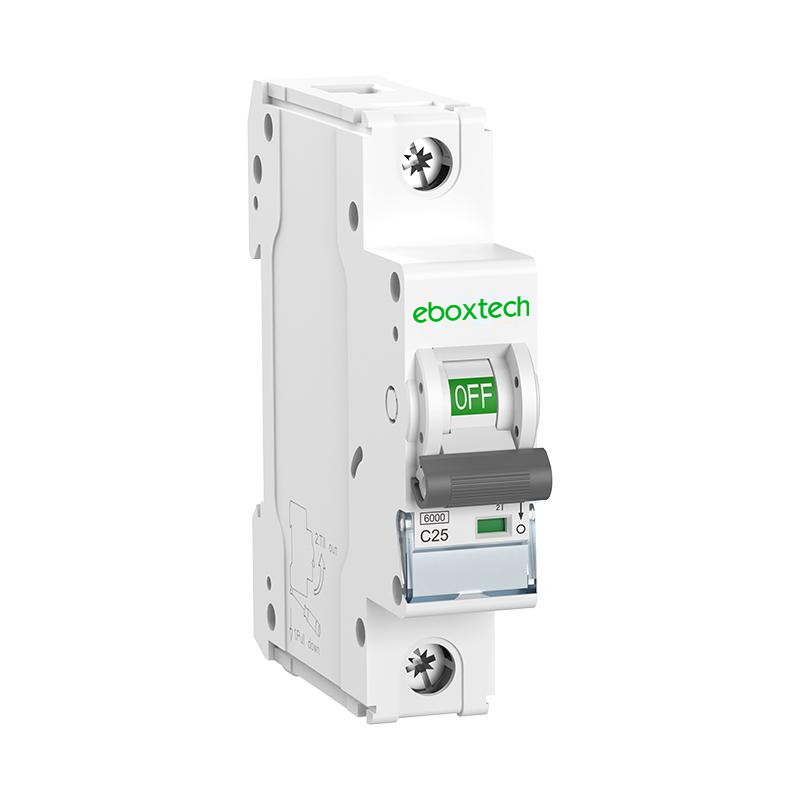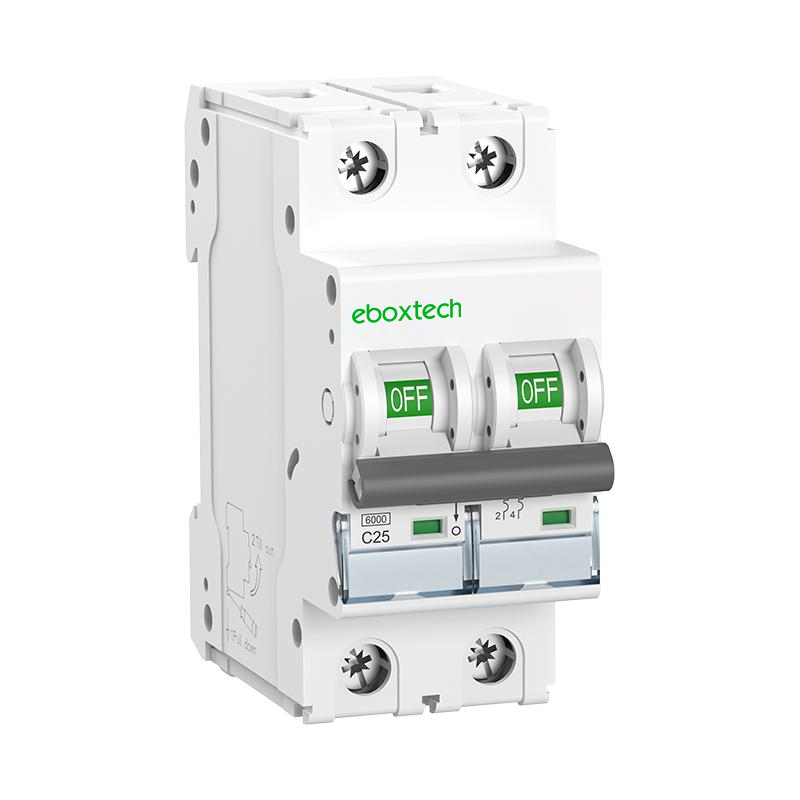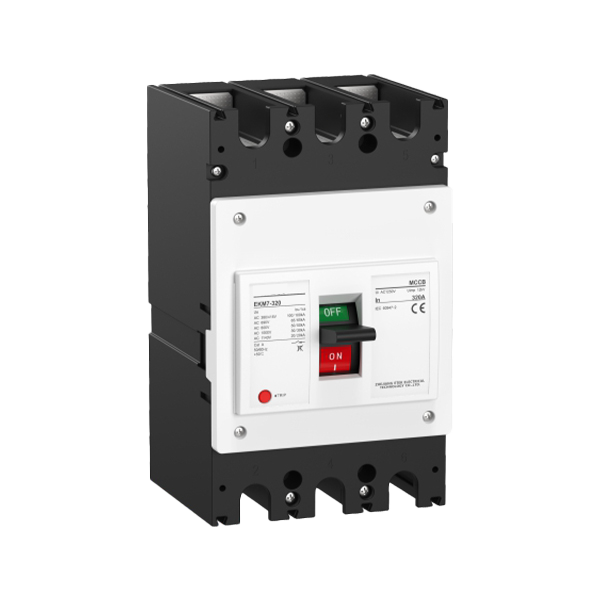Technical Interpretation How to Choose Circuit Breakers
Circuit breaker according to its use can be divided into distribution type circuit breaker, motor protection type circuit breaker, household protection type circuit breaker, leakage circuit breaker, etc., according to their protection characteristics are different, this article introduces how to choose the appropriate circuit breaker, so that in the selection of circuit breakers is used as a basis.
01 Selection of Distribution Circuit Breakers
Distribution circuit breakers are primarily used in low-voltage power networks for power distribution, including main power breakers and load branch breakers. When selecting this type of breaker, consider the following principles:
- The allowable current capacity of the wire should not be less than the long-delay trip current setting of the breaker. For wires and cables, this value can be set to 80% of the allowable current capacity.
- Ensure that the motor’s maximum starting current duration does not exceed 3 times the breaker’s long-delay trip current setting.
- The instantaneous current setting is defined as:
I1=1.1×(Ijx+kl*Iedm)
where kl is the motor starting current impact coefficient (usually 1.7 to 2), and Iedm is the rated current of the largest motor.

02 Selection of Motor Protection Circuit Breakers
Motors have two characteristics:
- The starting current is typically several times the rated current.
- Motors have certain overload capacities.
To ensure reliable motor protection, consider the following when selecting circuit breakers:
- Determine the long-delay trip current setting based on the motor’s rated current.
- The return time for 6 times the long-delay trip current setting should be greater than the motor’s actual startup time.
- The instantaneous trip current setting:
- Squirrel-cage motors: 8 to 15 times the rated current of the trip device.
- Wound-rotor motors: 3 to 6 times the rated current of the trip device.

03 Selection of Household Protection Circuit Breakers
In households, circuit breakers are typically used as main power protection switches or branch line protection switches. If a short circuit or overload occurs, the breaker trips automatically, cutting off the power and minimizing damage.
- Single-pole breakers (1P): For branch line protection.
- Two-pole breakers (2P): For main power protection.
When selecting the current rating, it is crucial to choose appropriately:
- Overrated: The breaker may fail to trip in case of a short circuit or overload, compromising safety.
- Underrated: Frequent tripping can disrupt daily life.
Generally to the rated current to distinguish the general small circuit breaker specifications, mainly 6A, 10A, 16A, 20A, 25A, 32A, 40A, 50A, 63A, 80A, 100A and so on.
The average family should pay attention to the following points when selecting or checking the total value of the total load current:
(1) The value of each branch current
① purely resistive loads with electrical appliances nameplate indicates that the power directly divided by the voltage that is, the
Formula I = power / 200v.
For example, 200 W bulb, branch current I = 200 W/220 = 0.9 A
Resistive load appliances are light bulbs, electric heaters, electric fans, electric frying pans, electric heaters, electric irons, electric blankets, electric rice cookers, hoovers, electric water heaters, air conditioners and so on.
② inductive load calculation is slightly more complex to consider the power consumption, specific calculations should also take into account the power factor, etc., in order to facilitate the estimation, I give a simple method of calculation, for the general inductive load, according to its stated load calculated by the power of two times can be, for example, the stated 200W fluorescent lamps branch current I = 200W/220v = 0.9A, doubled to 0.9 * 2 = 1.8A (more than the precise calculation of the power factor). 1.8A (more than the exact calculated value of 1.5A, more than 0.3A).
Inductive appliances are TV sets, washing machines, fluorescent lamps, refrigerators, fluorescent lamps and so on.
(2) The total load current is the sum of the branch currents
Know the branch current and the total current, you can choose the branch circuit breaker and the total circuit breaker specifications, or check the design of these electrical components have been designed to meet the specifications of the safety requirements; in order to ensure the safety and reliability of the electrical components of the rated operating current should generally be greater than 2 times the required * large load current; in addition to the selection of electrical components, but also to take into account the possibility of increasing the load of electricity in the future, for future requirements In addition, when selecting electrical components, the possibility of future increase in electrical load should also be taken into account, so as to allow for future demand.

04 Selection of Residual Current Circuit Breakers (RCCBs)
Residual current circuit breakers (RCCBs) can be two-pole, three-pole, or four-pole, depending on the circuit requirements. Follow these guidelines when selecting RCCBs:
- Overload trip current ≥ maximum circuit load current.
- Breaking capacity ≥ maximum circuit short-circuit current.
- Residual current protection threshold ≤ the circuit’s leakage current.
- Working voltage and current ≤ the breaker’s rated voltage and current.
- Quick response time to protect circuits and equipment effectively.
When to choose a four-pole RCCB:
- For power source conversion between the main supply and a backup generator.
- For dual-power source RCCBs with leakage protection.
- For power switching between different grounding systems.
- In TT systems for incoming lines.
- In IT systems with a neutral line.
When not to use four-pole RCCBs:
- TN-S and TN-C-S systems generally do not require them.
- TN-C systems strictly prohibit the use of four-pole RCCBs.
05 Circuit Breaker Selection Principles
- Rated voltage ≥ circuit voltage.
- Rated current ≥ calculated load current.
- Trip unit’s rated current ≥ calculated load current.
- Breaking capacity ≥ maximum short-circuit current in the circuit.
- Single-phase short-circuit current at the line end ≥ 1.25 times the instantaneous (or short-delay) trip current setting.
- Undervoltage trip unit voltage = circuit rated voltage.
06 Notes on Selecting Circuit Breakers
When purchasing circuit breakers, consider the following:
Selection Accuracy: Understand your requirements and choose appropriately.
Physical Inspection: Check for any visible damages such as scratches. Observe the breaker from various angles and under different lighting conditions to avoid hidden defects.
Functional Testing: Test key functions to ensure responsiveness, elasticity, and sensitivity. Frequent testing helps ensure the product is reliable.
Warranty and Delivery: Clarify warranty terms, lifespan, and delivery conditions. Understand post-purchase support for repairs or replacements.
Invoice Accuracy: Verify the model and specifications on the invoice. Avoid confusion due to similar models with different prices, particularly for imported brands.
Lastly, keep a record of the seller’s contact information and a purchase receipt for quick resolution in case of issues.


